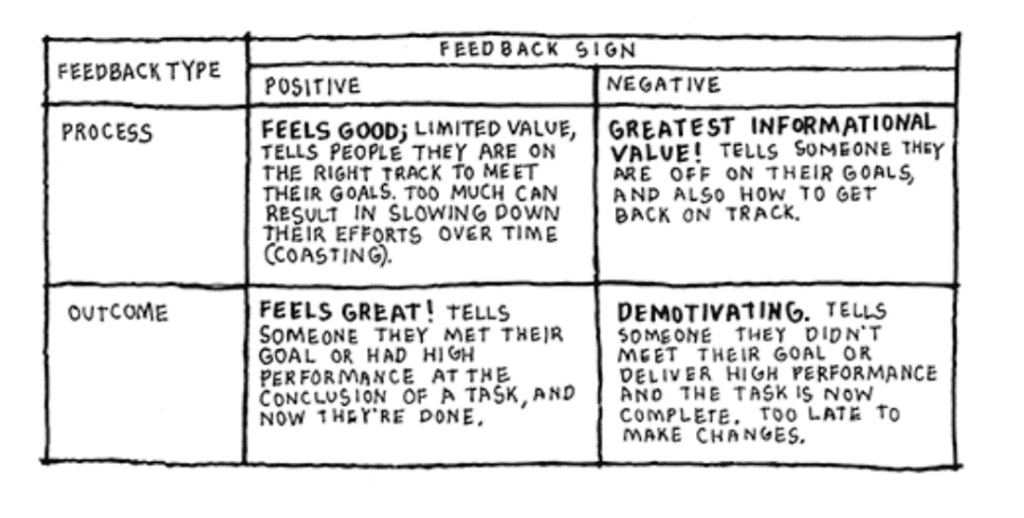3 challenges, 3 big advantages and 4 practical recommendations
In today’s rapidly evolving work landscape, hybrid workspaces have become the new norm, blending face-to-face interactions with digital communication methods. While this hybrid model offers flexibility and convenience, it also presents unique challenges, particularly when it comes to fostering a feedback culture. In a recent webinar hosted by Bean Sara Bastiaensens, an expert in communication and feedback, valuable insights were shared on navigating these challenges and creating a fruitful feedback culture in hybrid workspaces. Let’s explore some key takeaways from the webinar and discover practical recommendations for organizations and teams.
3 challenges of feedback in hybrid workspaces
Challenge 1: Differences in communication cues
One of the first challenges of feedback in hybrid work is the disparity between face-to-face and digital communication in terms of cues. Cues refer to the nonverbal information that individuals give and receive during communication, such as facial expressions and tone of voice. In face-to-face interactions, these cues play a significant role in conveying nuanced messages. However, in digital communication, especially text-based forms, such cues are absent, making it difficult to interpret messages accurately. This challenge can lead to misunderstandings and hinder effective feedback exchange.
Challenge 2: Reduced connections
Hybrid work models have also contributed to a sense of reduced connections among employees, both with their colleagues and employers. Research indicates that the quality of the feedback relationship is influenced by the perceived credibility and positive relationship between the feedback giver and receiver. With decreased interpersonal connections, the feedback relationship may suffer, making it crucial to address and strengthen these connections to facilitate effective feedback exchange.
Challenge 3: Assessing the receiver’s state
In traditional office settings, it is easier to gauge the receiver’s state and choose an appropriate time for feedback. However, in hybrid workspaces, where individuals may be working remotely, it becomes challenging to assess the receiver’s current state. Timing becomes crucial, as delivering feedback when someone is already overwhelmed or distracted may have negative consequences. Uncertainty regarding when and how the receiver will access the feedback further complicates the process.
3 big advantages of digital feedback
Luckily, for every challenge, there is an opportunity. And that is also the case for digital forms of communication. They provide a unique set of advantages, that when used well, can be an important asset in stimulating feedback.
Advantage 1: Allow people to stop, think and craft their message
Asynchronous communication, characterized by a time delay between sending and receiving messages, and text-based communication offer unique opportunities. They provide individuals with the time and space to carefully craft their feedback messages, enhancing the quality and thoughtfulness of the feedback given. This advantage is particularly beneficial for those who find it challenging to provide feedback face-to-face or who prefer a more reflective approach. It is also good for receiving feedback, because it allows you some time to let it sink in, before responding.
Advantage 2: Mitigating awkwardness
Digital communication methods, with their reduced cues, can alleviate the awkwardness associated with giving and receiving feedback. When individuals cannot immediately see the facial expressions or body language of the other person, it may be easier to initiate feedback conversations. This advantage proves especially valuable for introverted individuals or those who feel uncomfortable with face-to-face interactions. Digital communication allows them to express their thoughts and concerns without the pressure of immediate responses or potential social discomfort.
Advantage 3: Saving feedback for later
Another advantage of digital communication for feedback exchange is the ability to save and revisit feedback messages. When receiving negative feedback, the immediate emotional response can activate the avoidance or defensive response in our nervous system. This hinders our ability to process and learn from the feedback effectively. However, having the opportunity to save the feedback for later allows our nervous system to calm down, enabling rational thinking and facilitating a more constructive approach to the feedback. This advantage enhances the learning potential of feedback exchanges.

4 practical recommendations
Based on the insights shared in the webinar, here are four practical recommendations to foster a hybrid feedback culture within your organization and team:
1. Make use of (digital) scripts
Develop a set of guidelines or scripts for feedback exchanges, both in face-to-face meetings and digital communication. These scripts can provide individuals with a clear structure and ensure important aspects of feedback are addressed while allowing flexibility for personalization. It can also make it easier to take the first step and reduce ‘awkwardness’ and increase psychological safety.
2. Encourage regular feedback of various types
A lot of feedback happens in an informal way, in the hallway or at the coffee machine. In a hybrid workplace, it can be a challenge to create regular feedback moments. In your workplace, encourage:
- Positive feedback: gives people information on what good results look like and boosts their self-esteem.
- Process feedback: provides individuals with intermediate information aligned with their goals, allowing them sufficient time to make necessary adjustments or course corrections.

3. Choose your communication channel wisely
Encourage individuals to be mindful of the potential challenges faced by remote colleagues. Promote empathy and understanding in feedback exchanges, considering the limitations of digital communication and the receiver’s current circumstances.
4. Implement user-driven feedback tools
User-driven feedback tools offer individuals the power to make choices regarding various aspects of the feedback process. With these tools, individuals can determine when they receive feedback, from whom they receive it, and even the specific focus of the feedback.
Scientific research has demonstrated that the implementation of user-driven feedback tools leads to several positive outcomes. Firstly, it enhances self-awareness and fosters a sense of accountability for achieving desired results. Additionally, these tools facilitate continuous learning and personal development by providing individuals with valuable insights and areas for improvement. Moreover, the use of user-driven feedback tools promotes higher levels of engagement, as individuals feel more actively involved in their own growth and progress.
By empowering individuals with control over the feedback process, user-driven feedback tools prove to be effective mechanisms for personal and professional advancement.
Navigating challenges for success
By implementing these recommendations, organizations and teams can create a feedback culture that transcends the challenges posed by hybrid workspaces. Balancing the advantages of digital communication with strategies for strengthening connections and understanding individual states can foster a constructive and supportive feedback environment, ultimately benefiting employee growth and organizational success.
In conclusion, while hybrid workspaces present unique challenges for feedback exchange, they also offer opportunities for thoughtful and reflective communication. By leveraging the advantages of digital communication, organizations can navigate these challenges and create a feedback culture that promotes continuous improvement and collaboration in the hybrid work landscape.
Want to re-watch the webinar? You can find the full version here.
Want to read more? Sara has a book recommendation for those who want to dive deeper into the art of giving, receiving, and utilizing feedback.






